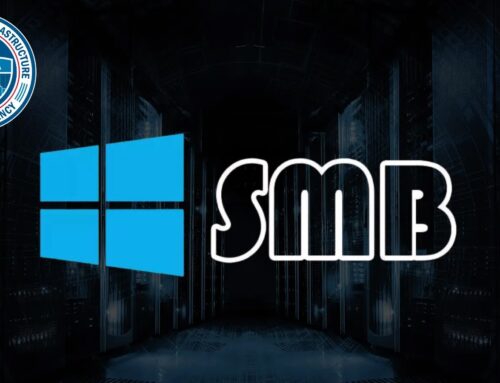
SonicWall SMA100 Series N-day Vulnerabilities Technical Details Revealed
The Unpatchable Past: SonicWall SMA100 N-Day Vulnerabilities Exposed
In the evolving landscape of cyber threats, the exposure of N-day vulnerabilities, particularly those affecting critical network infrastructure, serves as a stark reminder of persistent security challenges. Recent revelations regarding multiple critical vulnerabilities impacting SonicWall’s SMA100 series SSL-VPN appliances highlight a concerning trend: fundamental programming errors leading to pre-authentication attack vectors against widely deployed devices. These findings underscore the continuous need for vigilance and robust security practices in managing network perimeters.
Deconstructing the Flaws: CVE-2025-40596, CVE-2025-40597, and CVE-2025-40598
The vulnerabilities, designated CVE-2025-40596, CVE-2025-40597, and CVE-2025-40598, are not newly discovered bugs. Instead, they represent “N-day” vulnerabilities, meaning they were known to the vendor (or at least conceptually understood) before public disclosure, potentially leaving a window for exploitation before widespread patching. These specific flaws reveal significant weaknesses in SonicWall SMA100 series SSL-VPN appliances running firmware version 10.2.1.15.
- CVE-2025-40596 (Stack Overflow): This vulnerability points to a classic programming error where a program attempts to write more data into a stack-allocated buffer than it can hold. This can lead to overwriting adjacent memory, potentially including return addresses, and allowing an attacker to execute arbitrary code. Crucially, this overflow can be triggered without authentication, making it a severe remote code execution (RCE) risk.
- CVE-2025-40597 (Heap Overflow): Similar to a stack overflow, a heap overflow occurs when data is written past the end of a heap-allocated buffer. This can corrupt heap metadata or adjacent data, leading to denial-of-service conditions or, in more advanced scenarios, RCE. Like its stack counterpart, this heap overflow is pre-authentication, amplifying its danger.
- CVE-2025-40598 (Cross-Site Scripting – XSS): While XSS typically requires user interaction or an authenticated session, the context here suggests a pre-authentication XSS or one that can be leveraged in conjunction with the overflow vulnerabilities. XSS allows attackers to inject malicious client-side scripts into web pages viewed by other users, leading to session hijacking, data theft, or redirection to malicious sites.
The ability to trigger these overflow vulnerabilities pre-authentication fundamentally undermines the security posture of the affected devices, making them prime targets for malicious actors seeking initial access to an organization’s network.
Impact and Implications of SonicWall SMA100 Vulnerabilities
The immediate impact of these vulnerabilities is significant. For organizations utilizing vulnerable SonicWall SMA100 series devices, the risks include:
- Remote Code Execution (RCE): Attackers could gain complete control over the affected VPN appliance, allowing them to pivot into the internal network.
- Data Exfiltration: Sensitive data passing through the VPN or stored on the appliance could be compromised.
- Denial of Service (DoS): Exploiting the overflows could crash the device, disrupting critical remote access services.
- Network Compromise: A compromised VPN endpoint serves as a beachhead for further attacks, potentially leading to widespread network intrusion.
Beyond the immediate technical impact, the revelation of these N-day vulnerabilities erodes trust in the security of network infrastructure devices. It highlights that even established vendors can have critical, fundamental flaws in their code that go unaddressed for extended periods, or are exploited before patches become widely available. This necessitates a proactive and defensive strategy for network defenders.
Remediation Actions and Mitigations
Mitigating the risk associated with these N-day vulnerabilities requires immediate action and a comprehensive security strategy. While specific patches for N-day vulnerabilities are often already released by the time details are made public, organizations must ensure they are up-to-date.
- Patch Immediately: The most crucial step is to ensure that all SonicWall SMA100 series SSL-VPN appliances are running the latest firmware version. Organizations must check the official SonicWall support portal for patch availability and apply them as soon as possible.
- Isolate and Segment: Implement network segmentation to limit the blast radius if an appliance is compromised. Critical internal assets should not be directly accessible from the VPN termination point without additional layers of security.
- Enable Multi-Factor Authentication (MFA): While these vulnerabilities are pre-authentication, MFA remains a fundamental security control. For authenticated users, MFA significantly reduces the risk of credential compromise leading to further access.
- Apply Principle of Least Privilege: Ensure that the VPN appliance operates with only the necessary permissions and network access.
- Regular Security Audits and Penetration Testing: Proactively identify and address potential weaknesses in your network perimeter and infrastructure devices.
- Monitor Logs and Network Traffic: Implement robust logging and monitoring solutions to detect suspicious activity originating from or targeting your VPN appliances. Look for unusual traffic patterns, repeated failed login attempts (even if pre-authentication), and unexpected outbound connections.
Essential Tools for Detection and Mitigation
Effective defense against vulnerabilities like those found in SonicWall SMA100 devices relies on a combination of robust processes and capable security tools. While direct exploitation tools for N-day vulnerabilities are not typically disclosed publicly, detection and preventative measures are paramount.
| Tool Name | Purpose | Link |
|---|---|---|
| Nessus (Tenable) | Vulnerability Scanning & Asset Discovery | https://www.tenable.com/products/nessus |
| OpenVAS (Greenbone) | Open-Source Vulnerability Scanner | https://www.greenbone.net/en/community-edition/ |
| Snort/Suricata | Network Intrusion Detection/Prevention Systems (NIDS/NIPS) | https://www.snort.org/ https://suricata.io/ |
| Wireshark | Network Protocol Analyzer (Forensics) | https://www.wireshark.org/ |
| Splunk/ELK Stack | Security Information and Event Management (SIEM) | https://www.splunk.com/ https://www.elastic.co/elastic-stack |
Protecting Your Perimeter: A Continuous Endeavor
The recurring theme of critical vulnerabilities in network infrastructure like the SonicWall SMA100 series underscores a vital lesson: cybersecurity is an ongoing process, not a one-time configuration. Pre-authentication vulnerabilities, especially those leading to severe outcomes like RCE, are direct pathways for adversaries. Organizations must prioritize immediate patching, robust network segmentation, strong authentication, and continuous monitoring to secure their digital perimeters effectively. Relying solely on a vendor’s initial security claims without continuous verification and proactive defense is no longer a viable strategy in today’s threat landscape.





